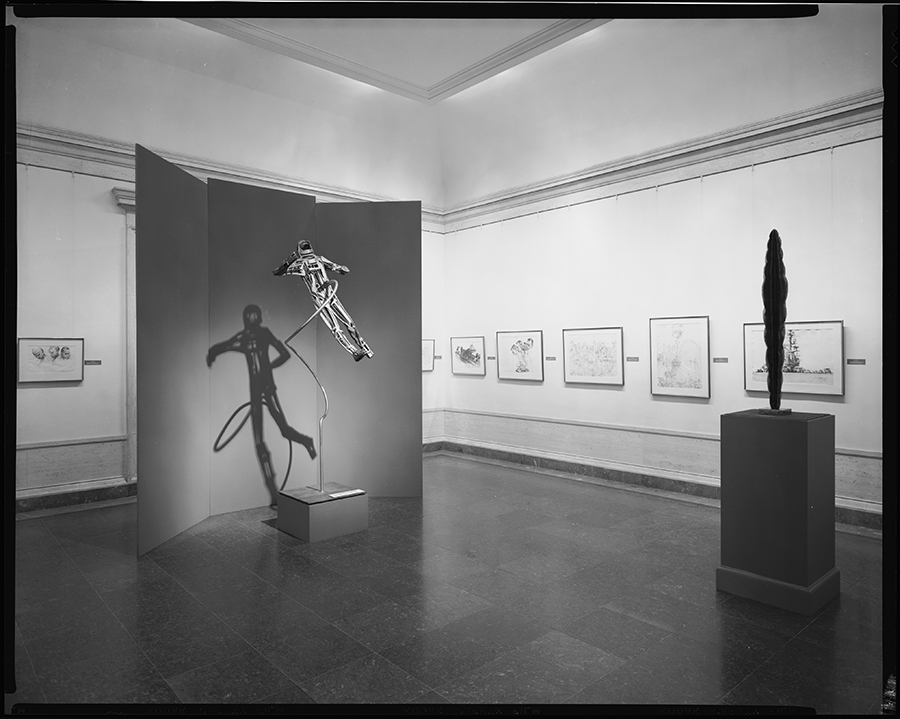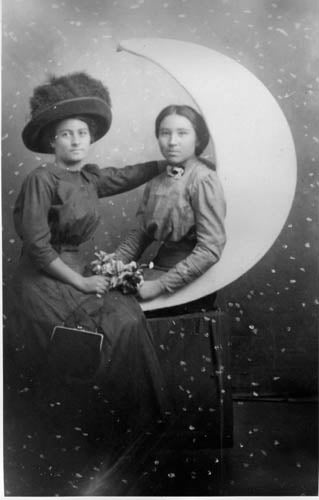Robb Hernández
Transplanetary: Speculative Arts of the Americas
Little is known about Latinx artists’ responses to the Space Age. Although the NASA Space Art Program produced two major exhibitions, in 1965 and 1969, at the National Gallery of Art, these presentations included few, if any, artists of color. This scant representation diminished Latinx creatives’ responses to modern-day spacefaring, perpetuating the belief that Latinxs are inconsequential to the visual vocabularies representing “the future.” My book manuscript, “Transplanetary: Speculative Arts of the Americas,” seeks to rectify this shortfall.

Installation view of the exhibition The Artist and Space, on view December 6, 1969–January 4, 1979. Photo courtesy of the National Gallery of Art Archives
Using “transplanetary relationality” as a theory and method in this study, I reveal how the important visual gesture of “looking up” is a critical mode of creativity, imagination, and altered sense of being and becoming Latinx. With an insistent use and communion with the skies, the artists focusing this study invite a vertical axis in our thinking about geopolitics, immigration, citizenry, and borders. By asking what happens when Latinidades is no longer defined “as backward and technologically inferior,” as Curtis Marez observes in Farm Worker Futurism, but rather as climbing to new heights of ascendency, we find newfound importance in areas little explored in Latinx art, performance, and visual culture studies. I argue that space-based thinking in history, technology, and speculation are consequential registers of Latinx artmaking and thus demonstrate how a telescope is as important as an aerosol spray can to Latinx expressivity. What separates geoengineering from the muddy spills of adobe at the Whitney Museum of American Art is put into question, intensifying the art, science, and speculative conjunctions that make this book innovative in its approach and archive.
By combining “trans-” with “planetary,” this project’s principal scaffold emphasizes change in a multipronged way. It benefits from the inroads made by the scientific and technological changes emphasized in science fiction studies as well as the transition of being that focuses trans studies. By suffusing these foci with the kinds of relations germane to “speculative arts,” a super-category combining genres like science fiction, fantasy, horror, and the paranormal—and in a Latinx context, the double meaning of the alien—it is possible to discern Latinx ways of becoming in tandem with celestial objects, cosmic entities, and exoplanets. Belonging to the universe is a trans-generational axiom that connects the ancient Americas with the present in this study, complicating the terms of “modern” and “contemporary” in Latinx art and performance. Although the creatives featured here have produced artworks mainly over the last four decades, they illuminate what Salvadoran artist Beatriz Cortez calls “untimely conversations.” Upending Westernized and colonial structures that typically organize art-historical periodization, this study’s scope is a transgressive patchwork of space and time. Such heterochronicity emboldens alternative directions in Latinx art, and so the definition of Latinidades is unhinged from its terrestrial confines, widening artistic preoccupations with what is happening on the ground and, most important, in the sky.

Portrait of Teresa Grijalva Orozco and Francisca Ocampo Quesada, Wickenburg, Arizona, c. 1912. Photo courtesy of Teodoro Ocampo and Mariana Rodriguez Ocampo Family Photograph Collection, MP SPC 173, Arizona State University Library, Chicano/a Research Collection
To illuminate Latinx creatives’ skilled reworkings of space history and technology, I consulted the National Gallery of Art Archives and evaluated the papers of curator Lester Cooke as well as files and records related to the exhibitions Eyewitness to Space (1965) and The Artist and Space (1969–1970). These findings not only illuminated how US artists pictured the future through an exhibition organized by the National Gallery, but also unveiled how the NASA Space Art Program was perceived and negotiated between Cooke and museum administration. These materials proved foundational and parlayed additional consultation of records at the Smithsonian National Air and Space Museum. Further, these documents show the valuable role of space science and the future of spacefaring to the National Gallery’s curatorial goals. They opened deeper insights into the ways in which this initiative forecasted the humanity of tomorrow with international acclaim and attention. These findings were incorporated into my colloquium at the National Gallery as well as my book manuscript.
Whether we consider Hispanic women dangling on paper moons at the outset of the Mexican Revolution or a conceptual photographer’s depiction of spacefaring “coconauts” in a restaging of the 1969 Apollo 11 lunar landing, space-based creativity pervades a Latinx search for expression and self-definition, further proving that deep space is not only black but brown as well.
Fordham University
Ailsa Mellon Bruce Senior Fellow, 2023–2024
Robb Hernández was promoted to full professor. He is returning to the Department of English at Fordham University, where he will oversee the Fashion Studies program.
